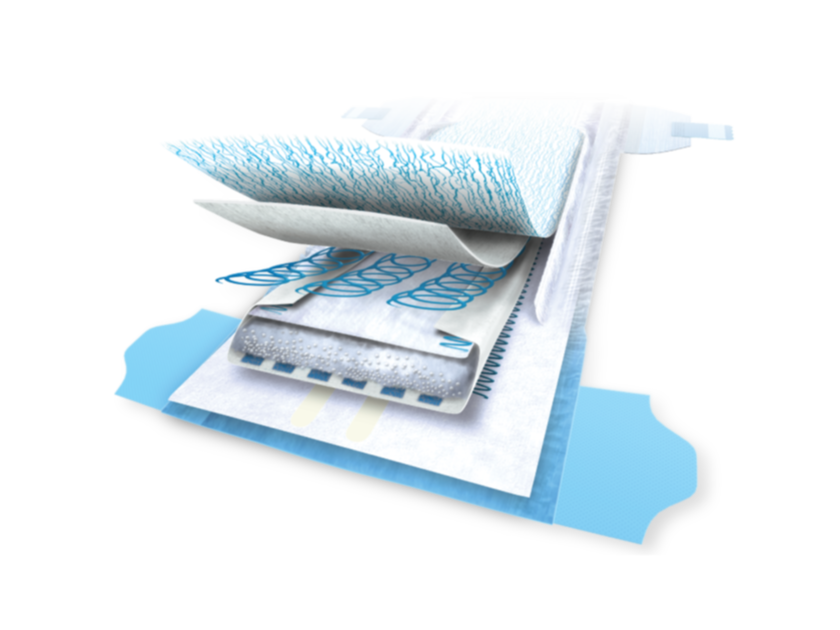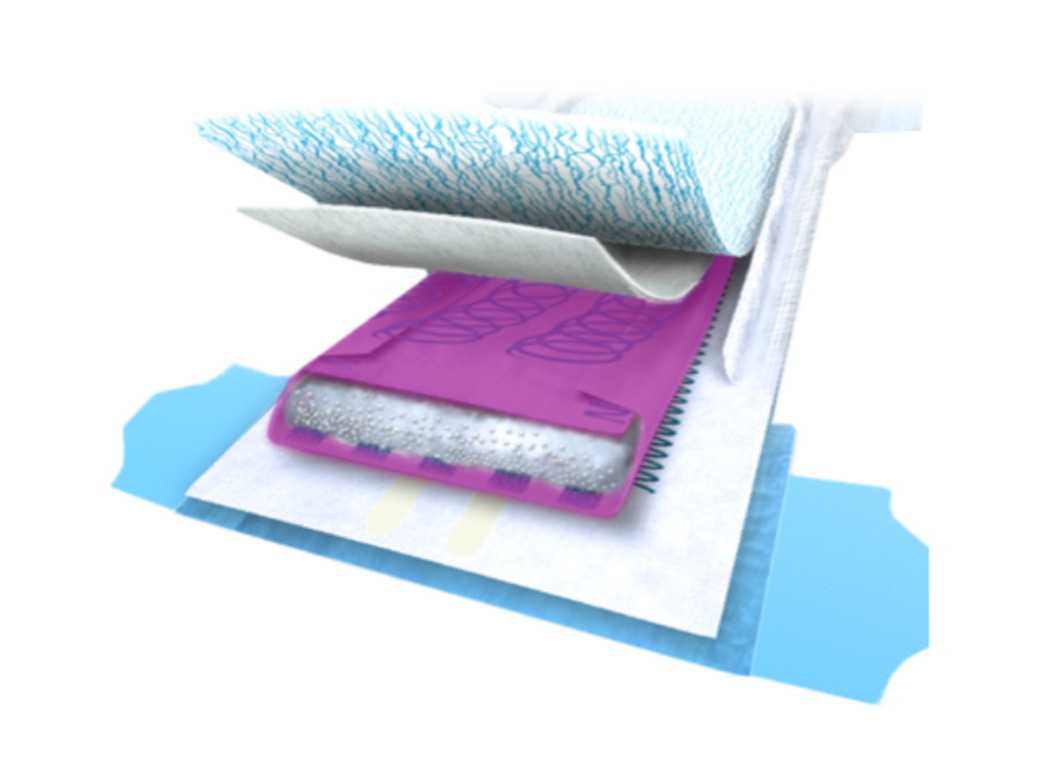Baby Cores: Traditional and New Designs
Parents of new babies want many things in a diaper. Naturally, they are concerned about leak prevention. They also care about skin wellness, sagging and softness. With this in mind, manufacturers are looking at options for new diaper designs.
Many of today’s diaper designs include a traditional absorbent core matrix. This has both cellulose fluff and superabsorbent polymer (SAP). Some of these cores contain more fluff than others (i.e., 50% or greater). This appeals to parents who believe bulkier equates to softer and better absorption.
No matter the amount of fluff, the best core performance and integrity comes with the use of:
A core adhesive is critical to make the most of diaper designs with less fluff. This is because the available fluff fibers create fewer entanglements to keep the SAP powder in place. In production, SAP can be lost when moving the fluff/SAP core matrix from the drum to the backsheet. However, the use of a core adhesive will help secure the SAP. This will ultimately reduce the amount of waste.
A core adhesive in designs with less fluff will also help keep the SAP evenly distributed. This will keep the baby (and parents) from feeling areas of loose SAP building up in the core.
Some new diaper designs are completely eliminating fluff. While there are benefits, there are also drawbacks. Because SAP absorbs liquid slowly and has poor wicking properties, fluff-free designs need more solutions to perform as fluff. Adhesive has been proven an essential solution in these three fluff-free design types:
Compound cores are also a fluff-free design option. They use a layer of synthetic fluffy nonwoven fiber with SAP sprinkled within the fibers, and tissue or nonwoven top and bottom layers. They have poor wicking abilities; the right core adhesive can reduce SAP loss and improve core integrity and impact wicking.
Channel cores are also a new design that can be completely fluff free. They use an adhesive to keep the SAP in place. Some channel core designs blend both SAP and fluff together. This approach should contain an adhesive for core integrity. In either case, an adhesive that can bond nonwoven to nonwoven is needed.
Channel core designs can also fit the baby’s body better once fluid is absorbed. This appeals to parents who are concerned with diaper sagging.
The future lies with understanding how traditional core designs work and taking a look at what can be improved. At Bostik, we recommend starting by choosing a core design, review overall diaper design changes that are needed and then focus on adhesive selection. Not every adhesive is created equal, and every adhesive won’t work in every core, so it’s important to involve experts like Bostik as soon as possible.






